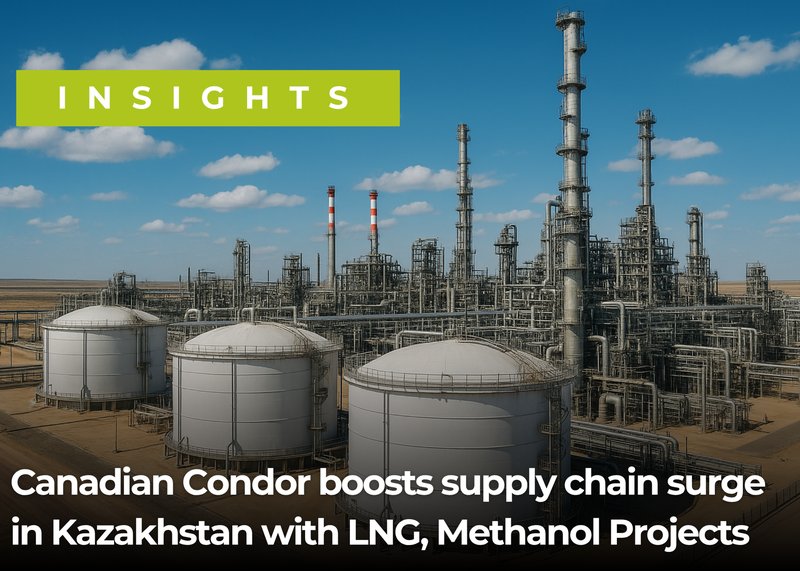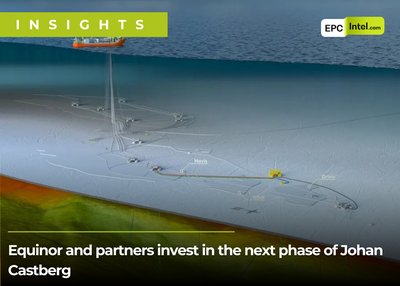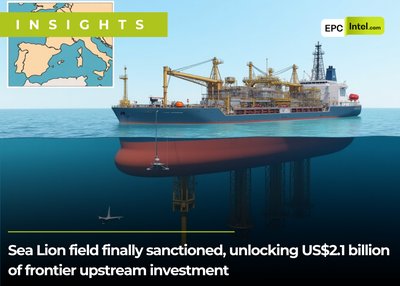Condor Energies Inc., a Canadian-based energy transition company, is advancing its presence in Central Asia with the construction of two major industrial facilities in Kazakhstan’s Mangystau region — a liquefied natural gas (LNG) plant and a methanol production plant. These projects not only represent a significant shift toward cleaner energy sources but also promise a substantial boost to the region’s industrial supply chain and local economy.
The announcement followed a meeting on July 8 between Nurdaulet Kilybay, Governor of Mangystau, and Norman Storm, Managing Director of Condor Energies and CEO of its subsidiary Qazaq LNG. The two sides discussed key investment initiatives and reaffirmed support for accelerating energy infrastructure in the region.
Central Asia’s First LNG Facility
The LNG plant, planned for a 16-hectare site near the port of Kuryk on the Caspian Sea, will be the first of its kind in Central Asia. With an annual production capacity of 145,000 tons, the facility is set to begin operations in 2027. During construction, it will create approximately 300 jobs, and an additional 100 permanent roles will be established once operational.
The LNG produced will serve a diverse range of heavy-duty transportation and industrial sectors — including rail, long-haul trucking, marine vessels, mining, agriculture, and municipal fleets — reducing dependency on diesel and helping lower carbon emissions. The facility will use advanced LNG liquefaction technology initially developed by the U.S. Department of Energy.
Methanol Plant to Strengthen Industrial Ecosystem
Adjacent to the LNG facility, Condor will also build a methanol production plant with a capacity of 100,000 tons per year. It is scheduled to be completed and operational by 2027. This project is expected to create 350 temporary jobs during construction and 200 permanent positions thereafter.
The methanol plant will further diversify the region’s industrial base and provide a locally sourced input for various chemical and manufacturing processes, reducing reliance on imports and enhancing domestic production capabilities.
Strengthening the Local Supply Chain
Beyond job creation, the twin projects are expected to deliver a significant boost to the regional supply chain. The construction and operation of the LNG and methanol plants will stimulate demand for local suppliers in fabrication, construction materials, logistics, equipment servicing, and skilled labor. Local contractors, manufacturers, and service providers will benefit from long-term procurement opportunities, supporting the development of a more resilient and diversified regional economy.
The strategic location near the Caspian Sea also positions Mangystau as a key logistics and export hub, enhancing Kazakhstan’s connectivity with neighboring countries and international markets.
Continued Commitment to Kazakhstan
Condor Energies, which has operated in Kazakhstan since 2006, continues to deepen its investment in the country’s energy sector. In March 2025, the company was granted a license for solid mineral extraction at the Kolkuduk field — a move that complements its broader strategy of building integrated, resource-based industrial projects.
According to MarketScreener, Condor’s largest shareholder is EurAsia Resource Value SE, a Cyprus-based entity with a 21.41% stake. Norman Storm holds a personal stake of 2.3% in the company.
Transforming the Region’s Energy Landscape
These twin energy projects mark a turning point for Kazakhstan’s industrial and energy transition. By leveraging local resources, creating employment, and stimulating the regional supply chain, Condor Energies is positioning the Mangystau region as a center of innovation and sustainable energy development in Central Asia. With operations expected to launch in 2027, the LNG and methanol plants will play a crucial role in driving economic growth and energy diversification for years to come.
💡 Looking to win work on major UK energy projects?
Subscribe to EPCIntel.com for real-time insight on project updates, contract awards, and who’s winning what in the energy, power, and chemicals markets.




